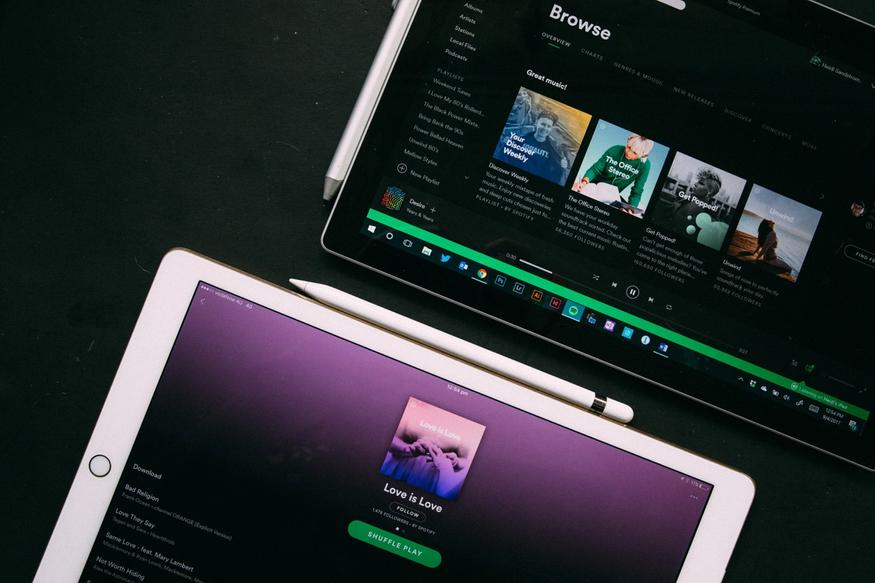The Benefits of Creating a Writing Playlist
Published on 9/13/2021Shonda Rhimes was the first person to teach me about the writing zone. In her Masterclass, she explained that some writers use a specific armchair or a place to get into this zone, and for her, it’s using a specific pair of noise-cancelling headphones. A writing zone is used to cement the habit, to help you enter the right state to begin writing. Consider it a ritual, as you’re instigating your creativity and motivation through sight, scent, sound or space.
This led me to wonder what constitutes my writing zone. I’m able to write in different places, and often I even need to for maximum productivity. I like drinking coffee whilst I write, but I also drink it 99% of the time, so it didn’t seem specific enough. After whittling down the possibilities, I realised that my writing zone centres on sound. I need to have music playing whilst I’m writing. It can’t be through headphones, it has to be around me.
This is something that often shocks friends and fellow writers, as people may struggle to write with the conflict of lyrics and potentially diverted focus. But I’ve become adept in drowning it out enough, instead using the calming effect of sound and familiarity of certain songs. To maximise the use of sound as my writing zone, I decided to create specific writing playlists, as I noticed how much time I was wasting by choosing music for each writing session. I first tried a playlist personalised to my work in progress, and then a more generalised playlist. I’m listening to the latter right now!

A personalised playlist
This involves creating a playlist specifically for a project. I first did this for a novel that focused heavily on what it means to be an artist and the love interest was a troubled singer. To help me picture her and the tone of the novel, I created a playlist of songs that reminded me of her style and music. It contained songs by Lana Del Rey, Halsey, Got a Girl and more. I listened to it each time I worked on this manuscript, and it really helped me capture a consistent tone.
But you can use a personalised playlist for projects that don’t specifically involve music as well. It’s just about setting the right tone and atmosphere for your specific novel and acts as research.
Benefits
1. Creates consistency throughout the novel, perhaps more than if you kept changing which genre of music you’re listening to.
2. Acts as research for the novel, and you never what ideas you’ll get in the meantime.
3. Reduces time spent looking for music.
4. Acts as the signal that you’re entering your writing zone.
A general playlist
This is definitely the easier of the two options! Instead of creating a playlist for each writing project, you make a more generalised one to use for every writing session. Then, every time you’re looking to write, you just open this playlist and set it to shuffle. It’s all about ease, as you skip the step of choosing what to listen to, and the familiar songs immerse you in the right mindset for writing.
For a general writing playlist, it’s all about quantity. You want to have enough songs to cover an average writing session, but also more than that to ensure it doesn’t feel too repetitive. You also don’t want to use this as a form of procrastination, adding new songs to avoid actually writing. Whenever I find an album I like, I add the entire thing to my writing playlist, maybe removing one or two songs I really dislike. This allows the playlist to bulk up and to get you out of your comfort zone of music. I’ve been doing this to my writing playlist for over a year now, and I’m on 38 hours!
By combining the familiarity of artists with enough music to keep it fresh, you stay focused. Never forget that you also have the option to skip a song!
Benefits
1. Reduces time spent looking for music.
2. Acts as the signal that you’re entering your writing zone.
3. Ensures that you don’t get bored of your playlist quickly.
4. Allows you to enjoy a variation of songs.
As mentioned, I’ve tried both types of writing playlists, and I can honestly recommend both! I think it depends on your type of project and level of focus. If you’re someone who bores easily of the same music or needs very specific genres for writing, then try a personalised playlist. But just ensure you’re able to hold yourself accountable and not use this as an extended form of procrastination. On the other hand, if you’re someone who simply needs a way to mark entering writing mode, and you’re more open to different types of music and songs, then go for a generalised writing playlist. It’ll save you time and thought, two things better used for your writing!
Find out more about my writing process as a content marketer, including how to complete an article in one hour.
Featured posts

Fleur
Welcome to Symptoms of Living! A place where I like to relieve myself of the barrage of thoughts and ideas filling my mind. Here I'll take a look at various topics, from books to BPD, series to self-harm, there's nothing that we can't, and shouldn't, talk about.
Having struggled with mental illness since the age of 15, one of the hardest parts was how alone I felt in it. While mental illness is beginning to be discussed more openly, and featured in the media, I still think there is room for improvement. So whether it is mental illness or merely mental health, a bad day or a bad year, let's make this a place to approach it and strip it back. Everyone has their own symptoms of living, and you certainly won't be the only one with it.
Would you like to receive my top monthly articles right to your inbox?
For any comments/questions/enquiries, please get in touch at:
info@byfleurine.com
I'd love to hear from you!